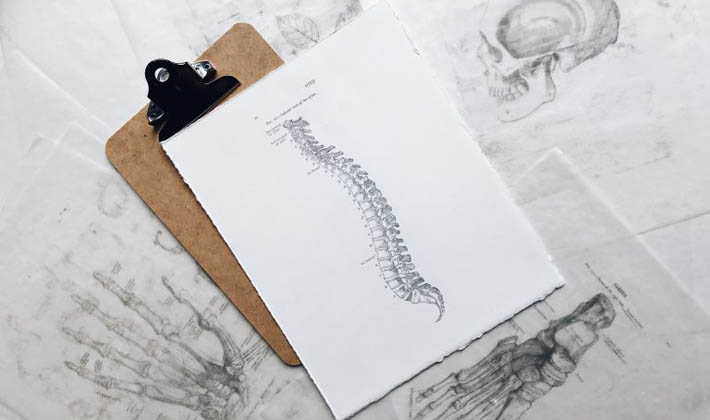
Low back pain comes in many forms and can have a multitude of causes. Muscle strain, osteoarthritis, trauma and pinched nerves can all be causes of low back pain. While low back pain is not normally caused solely from our feet, many patients are pleasantly surprised when they see an improvement in low back pain with the use of proper footwear and custom-made orthotics when used in conjunction with other treatment options. This may be in part due to the feet acting as the foundation for our bodies and when muscles are able to work efficiently and effectively, we see a chain reaction. How do our feet affect the lower back? Mechanics and footwear can both have an impact to the lower back.
Flat Feet and High Arches
The feet impact structures higher up the chain, especially with foot types like flat feet and high arches. As the feet roll inwards or outwards, the lower leg and upper legs are also moving with the feet. As this happens, the lower back is affected by what the feet are doing. Muscles will pull at the hip and back structures, causing abnormal strain to the lower back. This pull can come from the mechanics of the leg and hip, or even from certain muscles overworking, leading to tightness imbalances.
High arches can also affect the lower back by reduced shock absorption. In some cases, a high arch will not move enough, preventing shock absorption. With the same amount of shock present when striking the ground, the shock must go somewhere. Sometimes, the lower back may absorb the additional shock instead, leading to more strain.
To address these mechanical issues leading to lower back pain, custom-made foot orthotics help to align the foot to prevent abnormal motion.
Imbalances
A leg length discrepancy may cause low back pain as well. This discrepancy can be categorized as either structural or functional.
A structural difference means the leg bones are shorter on one side compared to the other. This may originate from factors such as leg fracture, surgery or genetics. A structural difference is treated with a lift in or on the shoe.
A functional difference means there are factors causing the legs to appear different lengths. For example, if the feet move differently from right to left, this may cause an imbalance higher up, impacting the lower back. This can be addressed with custom-made foot orthotics. If any functional differences are coming from higher up, a Physiotherapist or a Chiropractor can help to address these differences.
There are cases where both structural and functional factors may be present, causing multiple treatment types to be used.
Injuries
While the mechanics of the feet may not have created an injury, it can make an impact with healing and/or pain. If there are abnormal mechanics that were not causing issues, they may present a problem after an injury. These abnormal mechanics may be affecting the healing process, causing an injury to heal slower than normal. These cases are when orthotics may be necessary to help with the healing process. Once the injury has healed, there may be instances where support is still necessary. If an injury has changed any structures, the change may have introduced other issues related to these abnormal mechanics.
Footwear
Shoes with the proper features can make an impact to lower back pain. Shoes with the proper support help to prevent excessive motion at the feet, which can impact the structures higher up. Look for shoes that do not bend easily though the middle, as well as at the heel.
Also, make sure you are wearing the appropriate level of support for your foot type. For example, a high arched foot that rolls out should not be wearing a stability running shoe. A stability running shoe has additional support on the inside of the shoe, which can exaggerate the already present motion.
Additional cushioning may be appropriate for a high arched foot that rolls out. If the foot does not absorb shock properly, a cushioned shoe may absorb some shock that the foot is not.
Controlling the feet through support and proper footwear can help to address low back pain. For a more specialized treatment for your feet, talk to your Canadian Certified Pedorthist!
By Julia Hayman, C. Ped (C)
